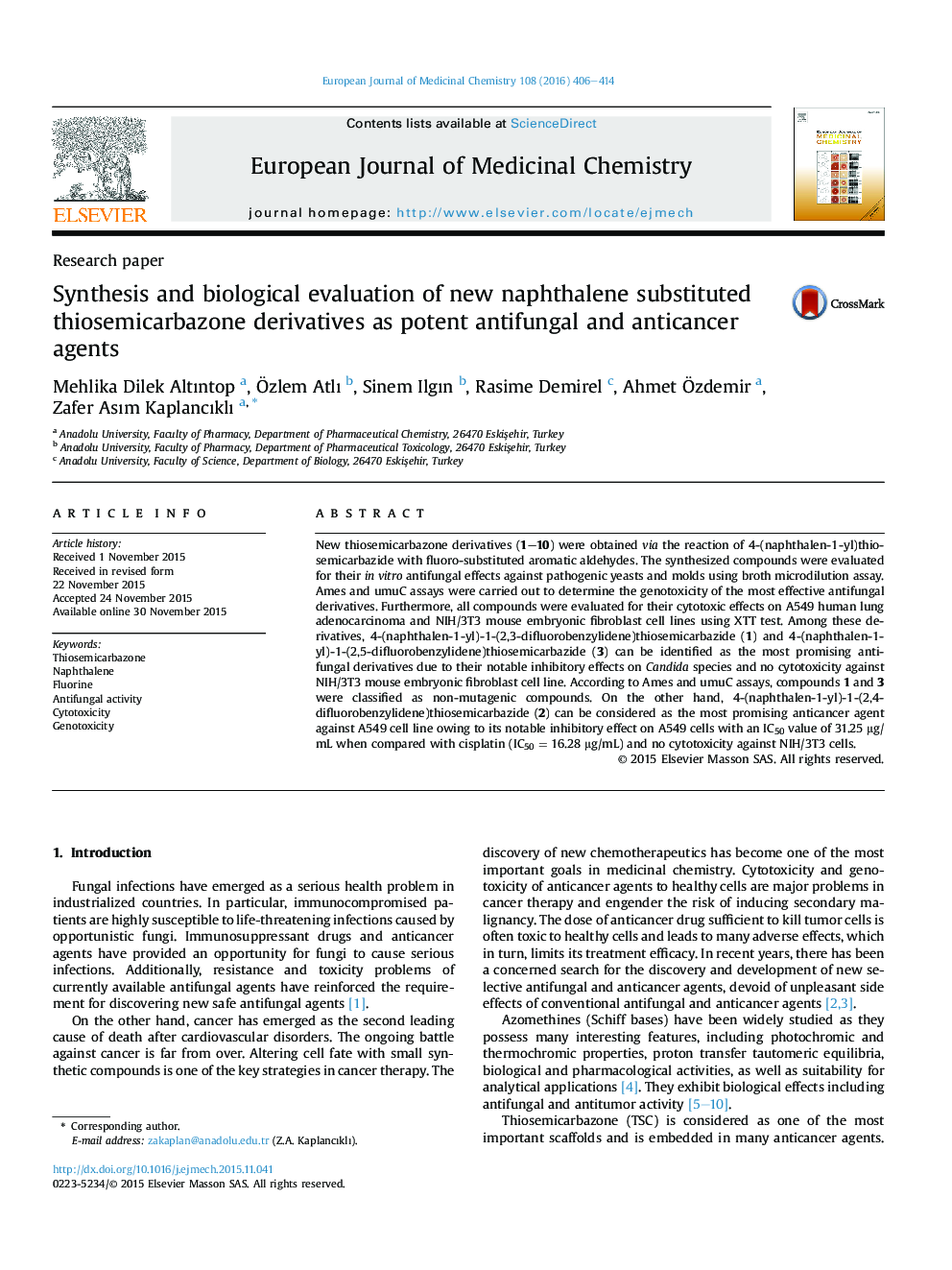| Article ID | Journal | Published Year | Pages | File Type |
|---|---|---|---|---|
| 1393862 | European Journal of Medicinal Chemistry | 2016 | 9 Pages |
•New thiosemicarbazone derivatives were tested against pathogenic yeasts and molds.•The genotoxicity of the most effective anticandidal agents was evaluated.•Each derivative was evaluated for its cytotoxicity against A549 and NIH/3T3 cells.•Compounds 1 and 3 were the most effective anticandidal derivatives.•Compound 2 was the most promising anticancer agent against A549 cell line.
New thiosemicarbazone derivatives (1–10) were obtained via the reaction of 4-(naphthalen-1-yl)thiosemicarbazide with fluoro-substituted aromatic aldehydes. The synthesized compounds were evaluated for their in vitro antifungal effects against pathogenic yeasts and molds using broth microdilution assay. Ames and umuC assays were carried out to determine the genotoxicity of the most effective antifungal derivatives. Furthermore, all compounds were evaluated for their cytotoxic effects on A549 human lung adenocarcinoma and NIH/3T3 mouse embryonic fibroblast cell lines using XTT test. Among these derivatives, 4-(naphthalen-1-yl)-1-(2,3-difluorobenzylidene)thiosemicarbazide (1) and 4-(naphthalen-1-yl)-1-(2,5-difluorobenzylidene)thiosemicarbazide (3) can be identified as the most promising antifungal derivatives due to their notable inhibitory effects on Candida species and no cytotoxicity against NIH/3T3 mouse embryonic fibroblast cell line. According to Ames and umuC assays, compounds 1 and 3 were classified as non-mutagenic compounds. On the other hand, 4-(naphthalen-1-yl)-1-(2,4-difluorobenzylidene)thiosemicarbazide (2) can be considered as the most promising anticancer agent against A549 cell line owing to its notable inhibitory effect on A549 cells with an IC50 value of 31.25 μg/mL when compared with cisplatin (IC50 = 16.28 μg/mL) and no cytotoxicity against NIH/3T3 cells.
Graphical abstractNew thiosemicarbazone derivatives were synthesized and evaluated for their antifungal activity and cytotoxicity against A549 and NIH/3T3 cell lines. The genotoxicity of the most effective antifungal compounds was also investigated.Figure optionsDownload full-size imageDownload as PowerPoint slide
